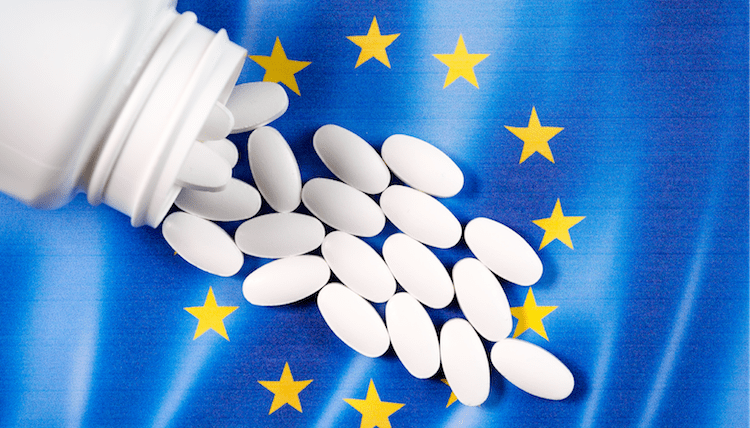The EU and Drug Shortages
The European Medicines Agency (EMA) has issued two guidance documents, respectively to pharmaceutical companies and national regulators in the European Union (EU), to develop and coordinate actions to better prevent, identify, manage, and communicate drug shortages.
Mitigating drug shortages in the EU
Both guidance documents lay the foundations for an improved and harmonized EU approach in the reporting of and communication on medicines’ shortages and availability issues. The guidance documents are two key deliverables of a task force established by EU regulators that have undergone consultation with stakeholder groups, including at a multi-stakeholder workshop in November 2018. The task force was set up by EMA and the Heads of Medicines Agencies (HMA), with representatives from the European Commission and national competent authorities, the chairs of the Co-ordination Group for Mutual Recognition and Decentralized Procedures—Human (CMDh) and Veterinary (CMDv), the GMP/GDP Inspectors Working Group, the Working Group of Communication Professionals (WGCP) and the European Surveillance Strategy Working Group (ESS WG).
Pharmaceutical companies’ role
The first document provides guidance to the pharmaceutical industry, a key player in addressing shortages, to facilitate the detection and early notification to competent authorities. The guidance is based on a common definition of the term “shortages,” which should enable a more harmonized and timely approach in the detection and management of issues with the supply of medicines. A proposed template for shortage notification by companies is included in the guidance. The guidance and template will be implemented in a pilot phase, which is currently planned to start in the last quarter of 2019. The EMA says that further information will be provided nearer that time.
This guidance document, which is directed to marketing authorization holders (MAHs), explains that the lack of a common definition of “shortages” in the European Economic Area (consisting of EU member states plus Iceland, Liechtenstein, and Norway) has meant that the detection and the management of shortages in the EU has been inconsistent and that comparisons across countries were not possible. This guidance, which is based on a common definition agreed on by all stakeholders, gives recommendations to facilitate the detection and reporting from marketing authorization holders to competent authorities about impending shortages. The guidance points out that early notification to competent authorities is a key aspect in the prevention or mitigation of a shortage by allowing sufficient time to make contingency arrangements where necessary.
Definition of a shortage and notification requirements. For purposes of the guidance, a “shortage” of a medicinal product for human or veterinary use occurs when supply does not meet demand at a national level. The guidance specifies the issues that MAHs need to report: (1) all shortages that are currently affecting one or more EU member states and (2) all impending/anticipated shortages that are expected to affect one or more EU member states. These situations include all current and impending shortages that have or will occur due to regulatory issues, quality defects and/or any other causes; these include, but are not limited to issues relating to good manufacturing practices (GMPs) and good distribution practices (GDPs), batch failures and medicine product recalls.
Notification requirements and shortage-prevention plans. In order to be able to notify any interruption of supply to competent authorities, the guidance specifies that MAHs must continuously monitor the supply and demand situation of their medicinal products and have an open and continuous communication with all their operators in the supply chain, such as manufacturers and wholesalers. The guidance emphasizes that early communication of relevant information is essential in handling shortages, particularly for medicines for which no or only limited alternatives are available and where interruption of supply will result in a potential risk to public health (e.g. clinically important medicines) and/or animal health and welfare. For those products, the guidance specifies that competent authorities may require MAHs to develop a shortage-prevention plan as part of their obligation to ensure continuous supply.
Manufacturing and the supply chain. The guidance points out that MAH oversight is also supported by other actors in the supply chain, who themselves may be able to monitor and detect “signals” of shortages. It specifies that an example of this is where a single manufacturer is contracted to produce medicinal products or active substances for a number of MAHs. The guidance explains that the impact of a manufacturing issue in this case could extend beyond one specific product and it is important to monitor these signals. It specifies that all operators are expected to monitor for signals and that signals may also come from community pharmacies, hospital pharmacies, retailers, healthcare professionals/veterinarians, patient groups and animal owners.
The guidance specifies that MAHs and operators of the supply chain are expected to develop and maintain resilience in the supply chain by: (1) regularly assessing supply information provided by their manufacturers and suppliers; (2) regularly assessing market needs based on information provided by wholesale distributors, community pharmacies, hospital pharmacies, retailers, healthcare professionals/veterinarians or patient groups; and (3) developing shortage-prevention and response plans. For this purpose, the guidance advises MAHs to use relevant guidance developed by professional organizations, such as the International Society for Pharmaceutical Engineering (ISPE) Drug Shortages Prevention Plan, the Parenteral Drug Association (PDA) Risk-Based Approach for Prevention and Management of Drug Shortages, and the PDA Technical Report.
Timing of notifications. The guidance points out that although EU legislation requires the notification of a shortage to be made no less than two months before the interruption in the placing on the market of the product, the guidance advises that MAHs should notify the authorities as early as possible as soon the shortage or the impending/anticipated shortage is confirmed. The guidance further specifies that there may be national reporting timeframes that should be taken into account.
Information to be included in a notification. The guidance explains that information provided in the notification is used by the competent authority for triaging and assessing the situation. The HMA/EMA has developed a proposed template, which is provided in the guidance, to be used when a reporting template is not available at a national level. The template will be implemented in a pilot phase, which is currently planned to start in the last quarter of 2019. The guidance recognizes that all the information in the template may not be available at the time of notification or may change over time but that outstanding or new information should be provided as soon as it becomes available or at a later point. The guidance also specifies that impact-assessment details should be included when appropriate and as per national reporting practices/tools. Individual member states will determine the preferred method of notification (e.g. email, PDF form, online data collection system).
Regulatory authorities’ role
The second document, addressed to EU national competent authorities and the EMA, lays out principles and examples of good practices for communication on shortages to the public, including patients and healthcare professionals who require timely, accurate and up-to-date information on availability issues to ensure continuity of care. The guidance is based on a survey carried out by the task force in all EU member states to collect information on how issues related to shortages and availability of medicines are measured and communicated to the public. In May 2018, the EMA and HMA carried out a survey to map public communication on shortages and availability of human medicines by EU regulators. The purpose was to assess, qualitatively and quantitatively, how EU regulators communicate to the public on shortages and supply issues.
The survey found that for human medicines, a majority (87%) of EU regulatory authorities (national competent authorities and the EMA) already publish information on shortages on their websites. However, among the authorities that publish information, a majority (69%) do not have set criteria for publication and publish on any shortage that is reported. Only selected member states have criteria for publication based on the duration of the shortage and the criticality of the medicine.
The survey also found that most authorities also communicate on other issues such as revocation or suspension of medicines (50%) or withdrawals of medicines due to commercial reasons (70%). This information is not necessarily reflected in the listing of shortages and various other communication tools may be used (such as press releases for individual availability issues).
The guidance points out that in other countries, a similar situation exists as in the EU. In the US, for example, the Association of Health System Pharmacists and the Food and Drug Administration publish a web listing of medicine shortages. Both listings include information on current and resolved shortages as well as other information for patients and consumers. The websites contain concise information on products affected by the shortage, the reason for the shortage, suitable alternatives and the expected resolution date. The information on the FDA website covers “medically necessary” medicines as well as those considered non-medically necessary for which the FDA has received multiple requests for information. It, however, does not include information on shortages of brief duration.
The guidance, therefore, recommends that regulatory authorities address the following in their communications: (1) any shortage of a medicine that affects the whole country (nationwide issues rather than local issues); (2) revocations or suspensions of medicines; and (3) cessations of marketing authorizations.
The guidance puts forth further recommendations for regulatory authorities when communicating information to the public and stakeholders on drug shortages. It offers recommendations on the following: (1) who should communicate; (2) who is the target audience; (3) which format or tools to use; (4) what information to be published; (5) when to publish; (6) how to involve stakeholders in the preparation and dissemination of information; (7) internal collaboration; and (8) examples of communication to the public and interaction with stakeholders.








